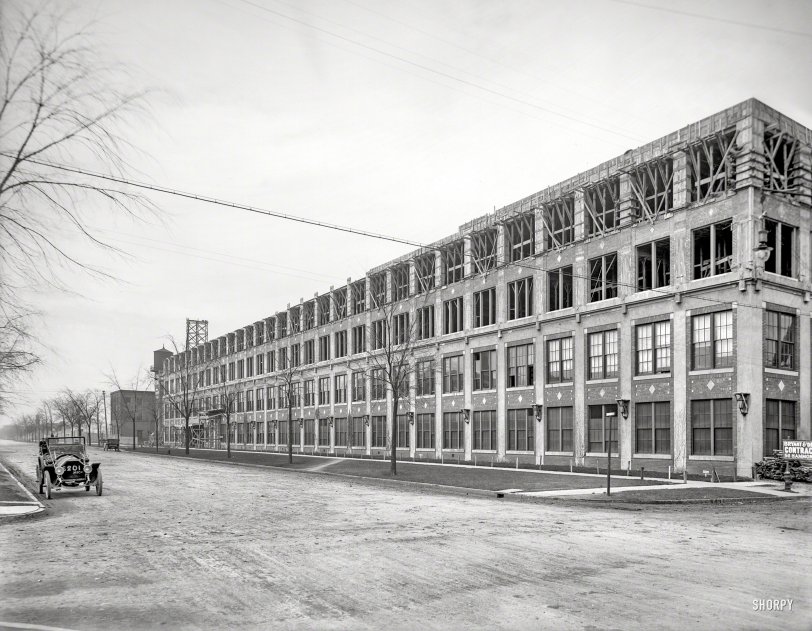


Framed or unframed, desk size to sofa size, printed by us in Arizona and Alabama since 2007. Explore now.
Shorpy is funded by you. Patreon contributors get an ad-free experience.
Learn more.

- Details, Details
- What's that building to the left of the tower?
- Coal Barges
- Bromo-Seltzer
- Inner harbor
- The Basin
- What a headache!
- Giant stepladder?
- Baldwin 62303
- Baldwin VO-1000
- Cold
- No expense spared
- Tough Guys
- Lost in Toyland
- And without gloves
- If I were a blindfolded time traveler
- Smoke Consumer Also Cooks
- Oh that stove!
- Possibly still there?
- What?!?
- $100 Reward
- Freeze Frame
- Texas Flyer wanted
- Just a Year Too Soon
- WWII -- Replacing men with women at the railroad crossing.
- Yes, Icing
- You kids drive me nuts!
- NOT An Easy Job
- I wonder
- Just add window boxes
Print Emporium
The Car Factory: 1911

Detroit circa 1911. "Boulevard view, Packard auto plant." At least two laborers are hard at work in our second look at the expansion of Albert Kahn's factory from two stories to four, at the spot where a bridge was eventually built over Grand Boulevard, connecting this building with one across the street. View full size.
The look of industrial America
This plant is so typical of industrial buildings in the first half of the 20'th century, reinforced concrete columns and floors with wall gaps filled in with brick or glass. They were efficient in the use of steel, trading low steel use for high labor costs for forming, pouring, stripping, etc.
This style of construction was especially appropriate for WWII factories when steel was needed by the war effort and concrete and brick were more readily available.
As structural steel became less expensive and more plentiful and labor costs increased for the forming and pouring over the years, structural steel structures with steel curtain walls replaced this style of building in America in the 1950's. The style continued on much longer in Europe and the Eastern Block.
Today it is very rare to see a new cast in place reinforced concrete building in America.
Kahn's work was not limited to rectangular layout factories like the Packard plant. He was also very capable of designing "people" buildings that were functional and very good looking.
Packard plant today
http://www.youtube.com/watch?v=hvTwY6tPf4k
A youtube link to a drone tour through the remains, with a MoTown tune to view by.
It pains me bad to think that one of America's finest autos used to roll out of there, and today it looks like a bombed-out 35 acre war zone.
What I wouldnt give to see it operating in its heyday.
License on the radiator
Michigan started with official license plates in 1910. From 1905-1910 the auto owner had to provide his own plates based on a number assigned by the state. This motorist opted to paint his number in bold and sloppy lettering across the radiator. Not classy, but legal. So this photo has to be earlier than 1911. Want to know more, visit www.LeatherLicensePlates.com
Bryant and Detwiler Contractor
There can be no question that Albert Kahn, John Bryant and Ward Detwiler (Bryant and Detwiler Contractors, Detroit) helped shape the greatness Detroit had achieved at its peak. Arguably, Kahn and Bryant/Detwiler were a team: Kahn would design and Bryant /Detwiler would build many of the great buildings that once graced Detroit’s landscape.
Interesting Plate
It looks like the license plate number was painted on the radiator of that car. Was this a common practice?
[Or "license number," since there is no plate. - Dave]
























On Shorpy:
Today’s Top 5